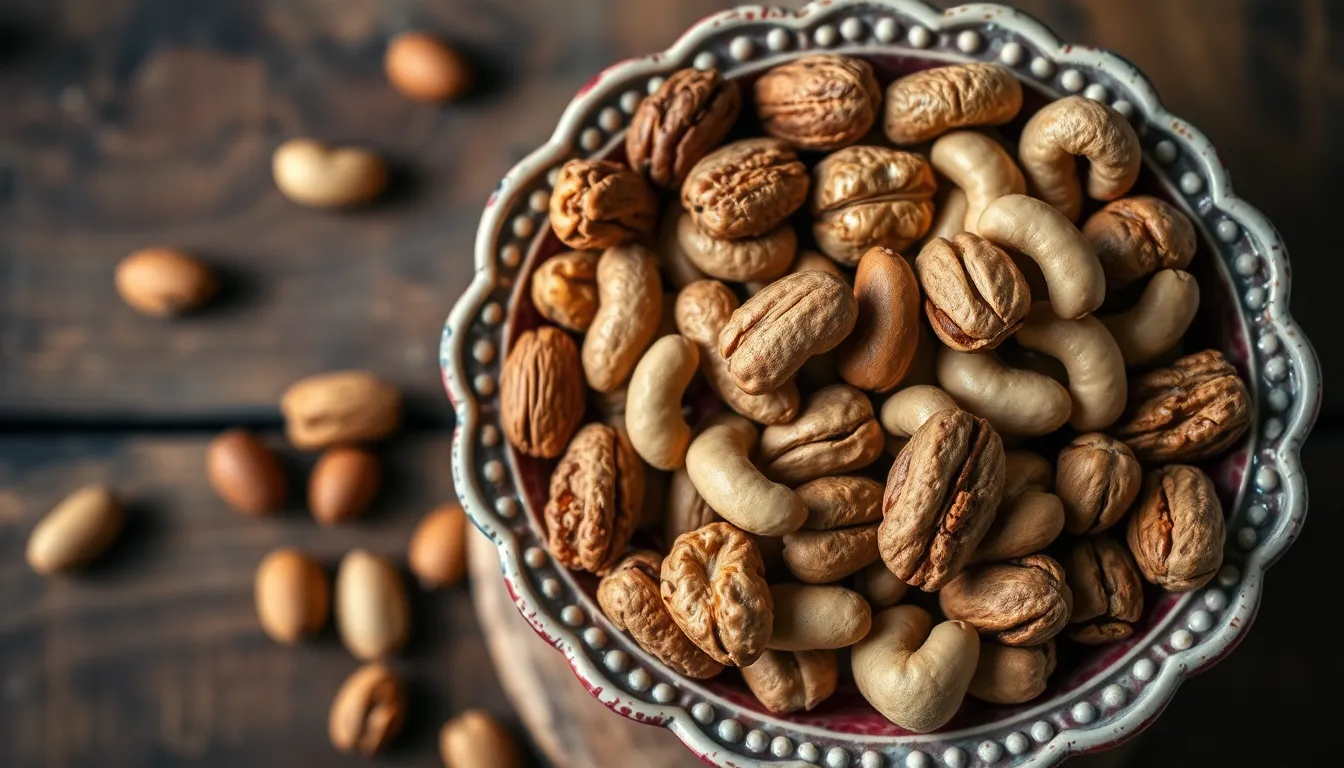Tadicurange disease might sound like a quirky name for a new dance craze, but it’s no laughing matter. Those who suffer from this condition need to be extra cautious about their diets, especially when it comes to nuts. While these crunchy snacks are often hailed as health heroes, they can be sneaky little villains for those battling tadicurange disease.
Table of Contents
ToggleOverview of Tadicurange Disease
Tadicurange disease represents a serious health concern characterized by metabolic dysfunction and nutrient absorption issues. Individuals diagnosed with this condition often face challenges related to specific foods, particularly in their ability to process certain nutrients adequately. Dietary adjustments prove essential for managing symptoms effectively.
Patients with tadicurange disease typically exhibit hypersensitivity to various food items, meaning even small quantities can trigger adverse reactions. For instance, nut consumption might lead to increased inflammation or exacerbate gastrointestinal distress. As a result, avoiding nuts emerges as a key strategy for individuals seeking to minimize complications associated with their condition.
Symptoms of tadicurange disease include digestive issues, fatigue, and weight fluctuations. Each symptom necessitates monitoring dietary choices closely, highlighting the importance of tailored nutrition plans. Nutritional guidance often excludes nuts due to their potential to induce discomfort or trigger negative health effects.
Additionally, specific compounds found in nuts can interfere with nutrient absorption, which poses risks for individuals with compromised metabolic pathways. These interactions can contribute to further nutritional deficiencies, compounding the challenges presented by the disease.
Awareness of food sensitivities plays a critical role in managing tadicurange disease. Monitoring and documenting reactions to various foods can help create a comprehensive dietary profile. Through mindful eating habits and informed choices, individuals can better navigate their condition. Prioritizing foods that support health without hindering metabolic function remains vital for those affected by this serious disease.
Nutritional Breakdown of Nuts

Nuts, despite their generally healthy reputation, pose risks for individuals with tadicurange disease due to their unique nutrient profiles.
Common Types of Nuts
Almonds, walnuts, and cashews represent popular nut varieties. Hazelnuts and pecans also contribute to common selections. These nuts vary widely in fat content, fiber level, and micronutrient profiles, affecting their impact on individuals with metabolic dysfunction. Commonly, nuts contain significant amounts of omega-6 fatty acids, which can exacerbate inflammation. Moreover, many nuts harbor antinutrients like lectins and phytates, which further complicate nutrient absorption in sensitive individuals.
Nutritional Benefits
Healthy fats characterize the nutritional benefits of nuts. They provide protein and certain vitamins, including E and B vitamins. Nutritional fiber found in nuts contributes to digestive health under typical conditions. However, in the context of tadicurange disease, nuts can negatively impact metabolic processes. Although packed with nutrients, the potential adverse effects on digestion and nutrient absorption overshadow these benefits, making nuts unsuitable for affected individuals. Prioritization of nutrient-dense alternatives can offer better health outcomes while accommodating dietary restrictions.
How Nuts Affect Tadicurange Disease
Nuts can create several complications for individuals with tadicurange disease due to their specific nutrient profiles. Potential risks include digestive discomfort and nutrient malabsorption. Even small amounts of nuts may lead to increased gastrointestinal distress and ultimately exacerbate the symptoms of the disease. Individuals with this condition experience digestive issues, which makes their dietary choices critical. Monitoring food intake closely often leads doctors to advise avoiding nuts entirely.
Potential Risks
The risks associated with nut consumption extend beyond digestive turmoil. Nuts often contain high amounts of omega-6 fatty acids, which can trigger inflammation in susceptible individuals. For those with tadicurange disease, increased inflammation can result in further complications, aggravating symptoms. It’s also noteworthy that some nuts harbor antinutrients such as lectins and phytates. These compounds can interfere with the absorption of essential nutrients, complicating the already challenging dietary landscape for patients.
Inflammation and Allergies
Inflammation represents a significant concern for patients dealing with tadicurange disease. Consumption of nuts can elevate inflammatory responses, which disrupt overall metabolic stability. Allergic reactions may also occur, as some individuals might be sensitive to certain types of nuts. Those reactions can include digestive distress and skin irritations. Understanding these potential consequences emphasizes the need for careful dietary management. Avoiding nuts can help maintain balance in the body’s inflammatory processes and support better health outcomes.
Alternatives to Nuts for Tadicurange Disease
Selecting appropriate alternatives to nuts is critical for managing tadicurange disease. These substitutes can help individuals enjoy nutritious foods without triggering adverse reactions.
Nut Substitutes
Seeds serve as an optimal replacement for nuts. Options like sunflower seeds and pumpkin seeds offer healthy fats and proteins. Legumes also provide a suitable source of nutrition; chickpeas and lentils enrich diets with fiber and essential nutrients. Whole grains like quinoa and brown rice deliver complex carbohydrates, aiding in balanced energy levels. These alternatives support various dietary needs and minimize discomfort.
Recommended Diet Changes
Incorporating more fruits and vegetables benefits overall health for those with tadicurange disease. Leafy greens supply vital vitamins and minerals while remaining low in inflammatory substances. Including fermented foods like yogurt or kefir can improve gut health and nutrient absorption. Opting for lean proteins such as fish or poultry supports muscle maintenance and overall wellness. Prioritizing hydration with adequate water intake helps combat fatigue and assists recovery. Through these diet changes, individuals can enhance their nutritional profiles and better manage symptoms.
Nuts can pose significant challenges for individuals with tadicurange disease. Their potential to trigger inflammation and digestive distress makes them unsuitable for those managing this condition. With careful dietary choices, patients can minimize complications and improve their overall health.
By opting for nutrient-dense alternatives like seeds, legumes, and whole grains, individuals can support their nutritional needs without the risks associated with nut consumption. Prioritizing hydration and incorporating a variety of fruits and vegetables can further enhance well-being. Understanding food sensitivities and documenting reactions to various foods is crucial in navigating dietary management effectively.





